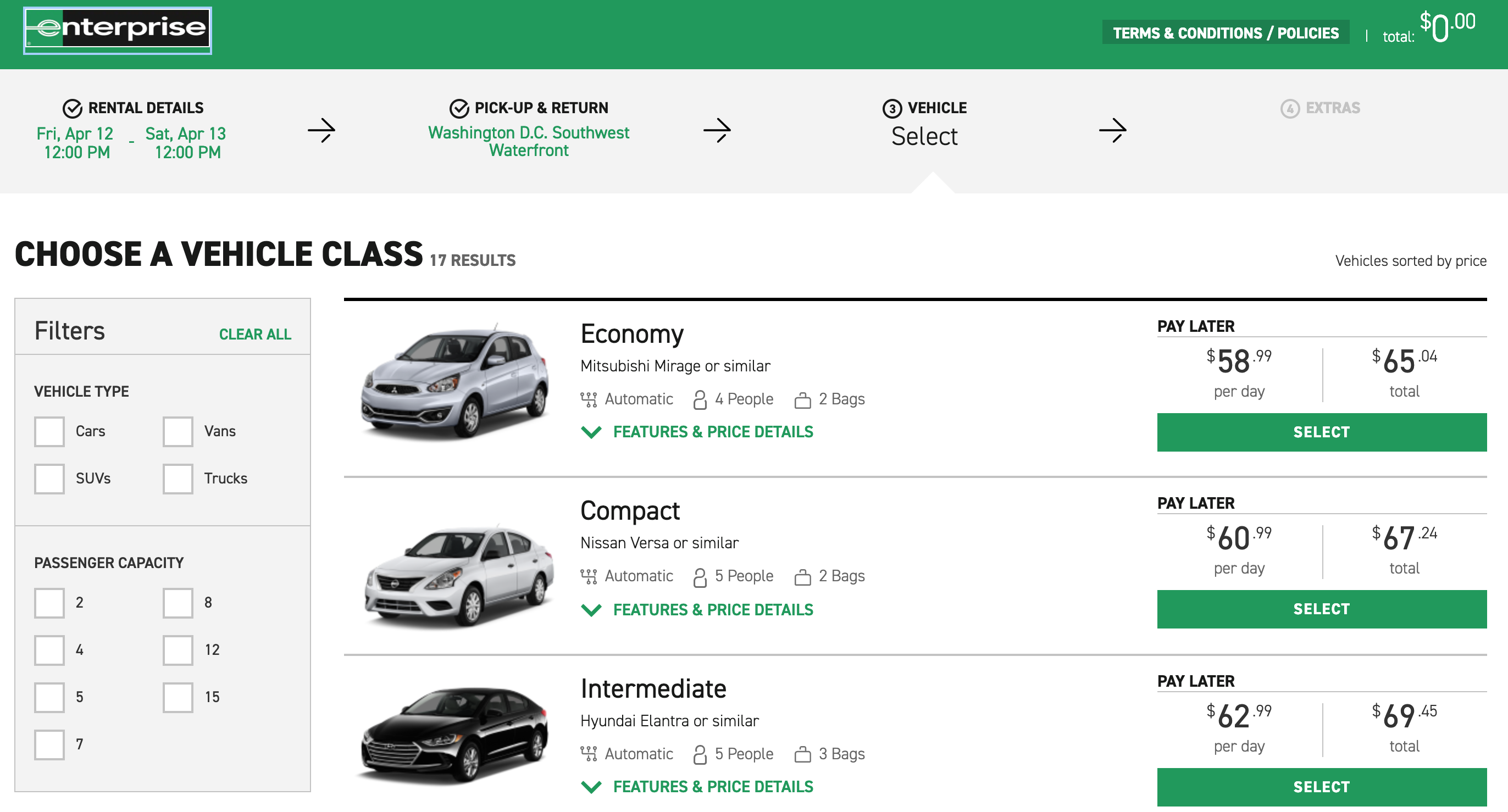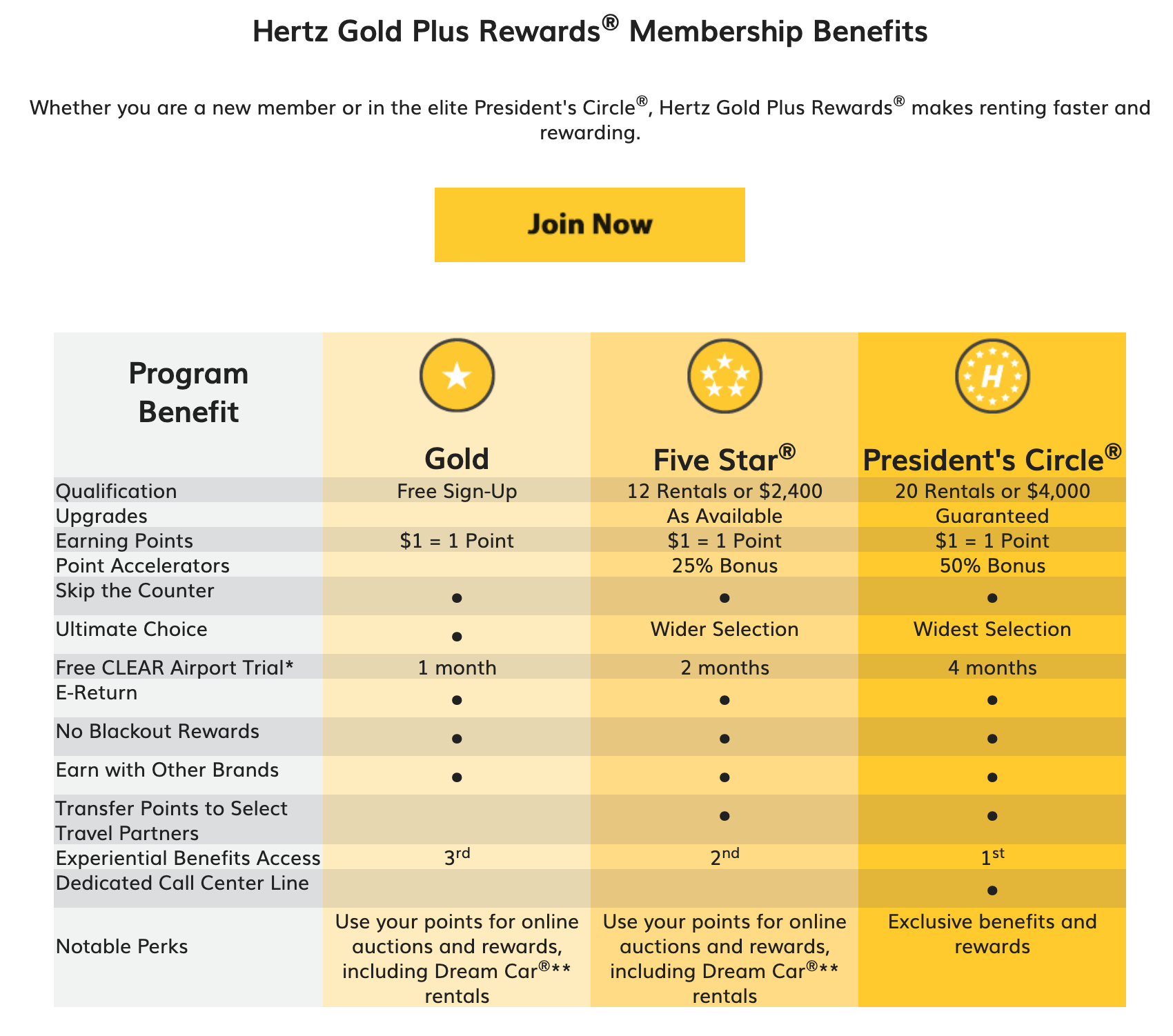Renting a vehicle on vacation is the prevalent method of transportation in North America. I highly recommend using public transit in metropolitans to save yourself from the quest for a parking spot and the annoying traffic. But other than these big cities, the rest of the USA requires a car to explore around.
At first, the one with the lowest price may seem like a reasonable choice, but if you are a Smart Traveler, you can get the most out of a car rental and still pay less. Here are the 12 ways to reserve a rental car the #TravelSmart way:
#TravelSmart Tips at a Glance
- Book Online and not at the Counter
- Select a Rental Center Location Wisely
- Identify your Car Needs
- Check the Mileage Limit
- Stick to One Rental Company
- Apply Discount Codes - University, Corporate, AAA, etc
- Use the Free Pickup and Dropoff
- Busy Times = Free Upgrade
- Don’t Pay for Insurance
- Don’t Pre-pay for Gas, or maybe you should
- Research Tolls along your Journey
- Understand Grace Period and Hourly Charges
Book Online and not at the Counter
This one is at the top of this list for obvious reasons. Making an online reservation provides you with a breakdown of the costs upfront. That means you can budget your trip and compare costs with other competitors in advance. With a guaranteed car rental upon your arrival, it also gives you the peace of mind and saves time at the car rental center.
You defintely don't want to just show up and then wait in a line for an hour!
Select a Rental Center Location Wisely
If you are taking a flight to your destination, compare prices of car rentals at the airport with a few nearby rental locations away from the airport. The difference for each day could range between $20 to $50 which is typically an airport convenience fee.
Do the math for all days of your trip and add the cost of two Uber rides (to and from the airport). You’ll still find significant savings renting from a non-airport center most of the times.
Apply the same trick to car rental centers in any given area. Some may be more expensive than others in the region based on reasons such as proximity to major stations, resorts, attractions, businesses, etc.

These two images are meant to show you a real example. See the difference in the price? The two locations are only 4 miles away from each other!

Identify your Car Needs
Most car rental companies have a long lineup of vehicles starting with an Economy going all the way up to a Full-size van. Although the economy and compact cars have the cheapest price tags, bear in mind factors such as the number and sizes of the bags and people you plan to fit in the car.
The next big thing to think about is the kind of drive you have planned. You are better off with an intermediate to full size if you are going to be driving long distances. A few short rides between close-by attractions calls for a compact car that will make parking in crowded areas easy-peasy.
Of course, if the prime motive is to show off driving a muscle car on the streets of Miami, ignore the above.
Check the Mileage Limit
After identifying your car needs, if you can figure out how many miles/kilometers will you be driving, it will help you to assess the mileage limits imposed by the rental agencies. Most of the times, you’ll find unlimited mileage offered on the reservation. But if you will only be driving to one nearby location, a limited mileage reservation that saves some money is the way to go.
Stick to One Rental Company
Renting from the same company accumulates points once you sign up for their free membership. This loyalty is rewarded with perks like discounts, free upgrades, and also free rentals once you have enough points. Check out the following images to get an idea of these perks for Hertz and Enterprise.


Even if you switch to another rental company because the offered price is remarkably cheaper, sign up for an account to earn the points. If you travel a lot, chances are you will redeem them sooner or later.
Apply Discount Codes - University, Corporate, AAA, etc
Almost all major car rental agencies have affiliations with universities and businesses. Students, employees and organization members should check their university and company benefits to avail of these discounts.
Usually, these contracts also provide awesome perks such as free additional drivers, included collision damage waiver, waived off underage fees, and zero or reduced fees upon return at another location.
Use the Free Pickup and Dropoff
Hertz and Enterprise both pick up and drop off customers within a 2-mile radius which can vary depending on the sparsity of other rental locations in the area.
Call the center in the morning of the reservation to reserve a pickup time. These companies run a schedule which can fill up quickly on busy days.
Busy Times = Free Upgrade
Traveling during long weekends means long wait lines to get your car rental. But the positive side to that is that you may get a free upgrade because the fleet of cars under the category you booked are all gone.
If you don’t get lucky, try requesting your agent to give you an upgrade because you’ve been waiting for a long time. It might work. Been there, done that!
Don’t Pay for Insurance
If you didn’t know this yet, most of the credit cards cover rental car insurance. Call your credit card company and understand the coverages and deductibles once and for all, so that you can swipe the card confidently upon renting the car.
The coverage typically includes collision damage or loss damage and sometimes towing expenses. What is definitely not covered are the liability charges which usually people have covered with other insurance companies.
Don’t Pre-pay for Gas, or maybe you should
Prepaid gas is simply a way to grab extra monies from you. It is difficult to calculate the precise amount of fuel you will be using throughout the trip. If you think that you can return the car with an empty tank, fully exhausting what you paid for, reconsider the calculation.
The smart way to go about it would be to search for the gas rates around and compare them with the offered rate. If the latter is saving you big bucks especially for a full tank, given that you’re heading for a super long drive, pre-paying ain’t a bad idea then.
Research Tolls along your Journey
Car rentals offer a toll pass in many areas. You pay a small fee per day for a transponder which discounts the cash fee of the tolls. It might be beneficial to opt-in, especially in areas like Florida and California where tolls are one of the highest ones.
The only correct way to know an answer is to research beforehand the roads you plan to drive on. One cool app to help you with this is TollGuru.
Understand Grace Period and Hourly Charges
Some car rentals offer up to an hour long grace period which means you can return the car within a maximum of one hour. Ask about the grace period before you drive away to plan ahead of time for any delays.
But what if you want to return the car rental a couple of hours later than the return time? Since it is beyond the grace period, you may be under the impression that you’ll have to pay for an extra full day fee. Actually, you may not have to. Enterprise, for example, charges an hourly rate if the car is returned within 2.5 hours of the end time. You can add the extra time beforehand while making the reservation too.
Comment below if you use any of these ways to book a car rental or if you have any new tips you would want me to add to the list. As always, Happy Exploring!





